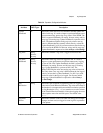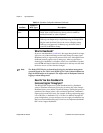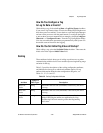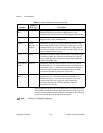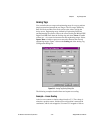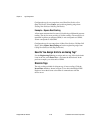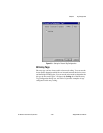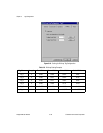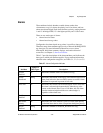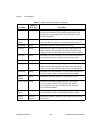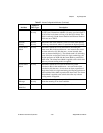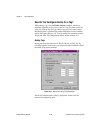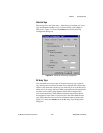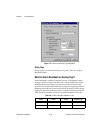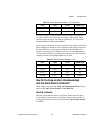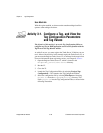
Chapter 3 Tag Configuration
© National Instruments Corporation 3-31 BridgeVIEW User Manual
Alarms
These attributes include whether to enable alarms, under what
circumstances a tag is in alarm, the priority level of an alarm, and how
alarms are acknowledged. Each alarm limit has a priority, ranging between
1 and 15. In BridgeVIEW, 15 is the highest priority and 1 is the lowest.
There are two main types of alarms:
• Alarms based on status
• Alarms based on tag values
Configuration for alarms based on tag values is specific to data type.
Therefore, many alarm attributes apply to only a subset of the BridgeVIEW
tag data types. For more information about how to access alarm
information, build alarm summary displays, and retrieve historical
events files, see Chapter 5, Alarms and Events.
Table 3-7 provides descriptions of the alarm attributes, and indicates the
data types to which each attribute applies. For tag attribute information
about the other configuration categories, see Tables 3-1, 3-2, 3-4, or 3-5.
Table 3-7. Alarms Configuration Attributes
Attribute
Applies to
Data Types
Description
Alarms
Enabled
all Determines whether alarms are enabled for a tag.
Alarm
Deadband
analog Determines the amount an analog tag value must diverge from an
alarm limit before the alarm condition returns to normal. Alarm
Deadband is expressed in percent of full scale.
Auto Ack all Determines how alarms can be acknowledged. If set to Auto Ack,
the alarm is acknowledged automatically when the tag value
returns to the Normal state. If set to User Must Ack, the alarm
remains unacknowledged until the user acknowledges it,
regardless of the alarm state.
Bad Status
Enabled
all Determines whether to enable Bad Status alarms for the tag.
Bad Status
Priority
all Determines the value (between 1 and 15) for the alarm priority
for the Bad Status alarm, where 15 represents the highest priority.
HI_HI
Enabled
analog Determines whether to enable HI_HI alarms for a tag.



